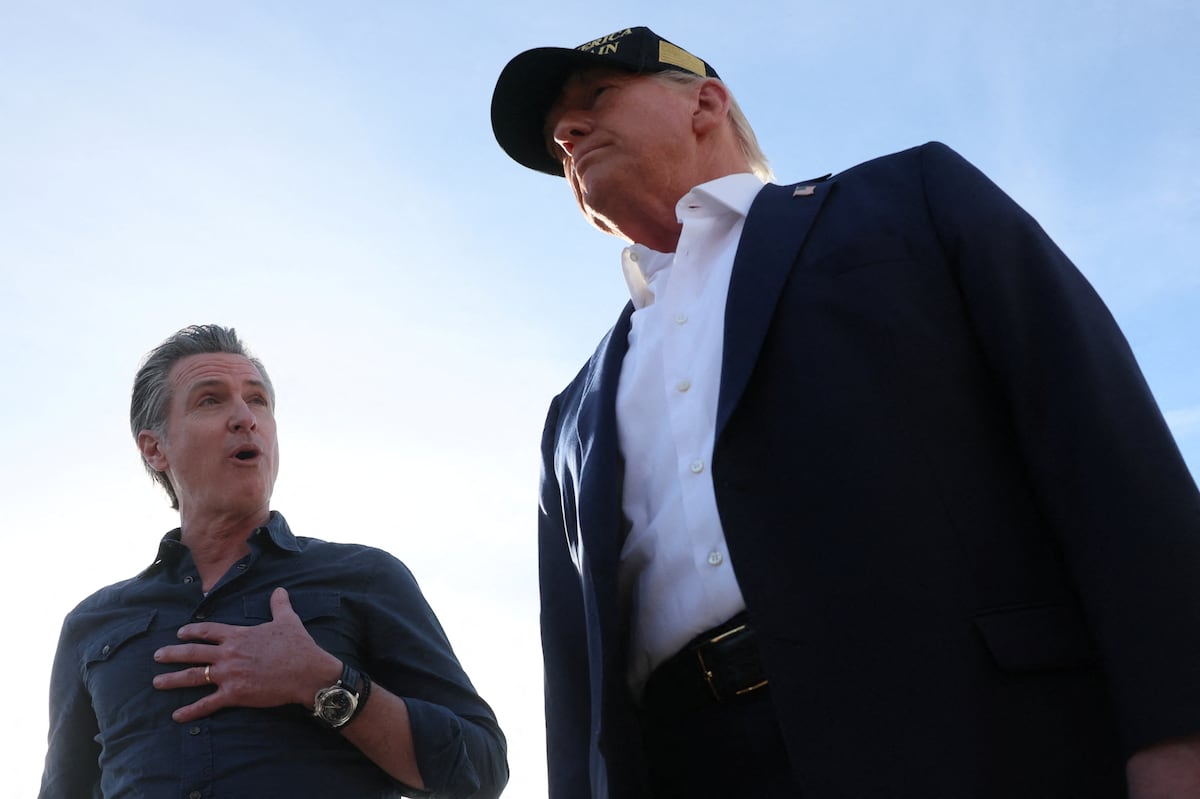California Governor Gavin Newsom Seeks Trade Exemption Amid Trump’s tariff Threats
By Archyde News Journalist |
California Governor Gavin Newsom is appealing directly to international leaders, urging them to consider the Golden State separately from potential U.S. tariffs under a returning Trump management. Citing California’s economic might, Newsom hopes to shield the state from the fallout of a potential global trade war.
Newsom’s Bold Stand: “California is not Washington DC”
In a direct challenge to potential trade policies, California governor Gavin Newsom has made a bold appeal to foreign nations, declaring, “California is not Washington DC.” This statement underscores Newsom’s attempt to carve out a preferential trade arrangement for California, the economic powerhouse of the United States, amidst renewed threats of tariffs under a possible second Trump presidency.
Newsom has publicly voiced his concerns, signaling to the international community his desire to shield California from the repercussions of potential tariffs. “We value international trade and manufacturing industry, so we will continue to reinforce those links,” Newsom stated in a video, emphasizing California’s commitment to maintaining strong global partnerships. This proactive approach highlights the governor’s intent to protect California’s economic interests and its vital role in international commerce.
california’s Economic Prowess: A Case for Special Consideration
Newsom’s argument rests on California’s immense economic strength. As the world’s fifth-largest economy, boasting a GDP of $3.9 trillion, California surpasses economic giants like Texas and Florida. The state is a critically important contributor to the U.S. Federal Treasury, injecting approximately $83 billion annually.
Furthermore, California’s agricultural sector is the largest in the nation, and its manufacturing base is formidable, supporting 1.1 million workers across 36,000 factories. Since 1965, California has held the top position in product manufacturing, producing critical components for aerospace, defense, and cutting-edge technologies, including electric vehicles like Tesla and semiconductors from companies like Qualcomm and Intel. This diverse and robust economy, Newsom argues, merits special consideration when international trade policies are formulated.
| Economic Indicator | California | Comparison (e.g., Texas) |
|---|---|---|
| GDP | $3.9 Trillion | ~$2.4 Trillion |
| Contribution to Federal treasury | $83 Billion | Significantly Lower |
| Manufacturing Workforce | 1.1 Million | Smaller |
Navigating a Tariff War: Risks and Repercussions
Newsom’s attempt to navigate the turbulent waters of a potential trade war comes as former President Trump revives his “Day of Liberation” tariff policies. These tariffs, notably those targeting China, pose a significant threat to California’s economy. China’s retaliatory tariffs, announced to take effect on April 10, further exacerbate the situation.
The governor acknowledges the delicate balance, especially considering California’s reliance on federal resources for ongoing recovery efforts in Los Angeles and his own potential future presidential ambitions. However, he remains firm in his stance against tariffs, echoing concerns that they are “a tax to all Americans.” This position aligns with a broader critique of tariffs, which economists often warn can lead to higher prices for consumers and reduced competitiveness for businesses.
“Donald Trump’s tariffs do not represent all Americans,”
Gavin Newsom on X
Newsom further stated on X, “In the name of the 40 million of the state, which will be the US economy, our vision is to seek stable business relations with the rest of the world.”
California’s Gateway to Asia: ports at Risk
California serves as the primary gateway to Asia for the United States. The Port of Los Angeles alone supports an estimated one million jobs, managing approximately 10% of all imports into the country. The port’s activity has grown substantially in recent years, highlighting its critical role in the national supply chain. Other significant California ports, including Long Beach and Oakland, are also vital hubs for maritime trade.
The memory of 2019, when Trump’s initial trade measures against China caused disruptions to supply chains, looms large. Even though the effects were relatively minor, they serve as a cautionary tale of the potential damage that escalating trade tensions can inflict on the state’s economy.
Trade Dependence: Imports and Exports
Approximately 40% of california’s imports originate from Mexico, Canada, and China, representing roughly $200 billion of the state’s $491 billion in annual goods received. While the White House has largely avoided broad tariffs on Mexico and Canada,focusing instead on specific industries like automotive,steel,and aluminum,the situation remains precarious.The Canadian government’s retaliatory tariffs serve as a reminder of the swift and potentially escalating nature of trade disputes.
These three countries are also primary destinations for California’s exports, purchasing approximately $67 billion worth of goods annually, about one-third of the state’s total exports. Disruptions to these trade flows could endanger an estimated 60,000 small and medium-sized businesses in California,according to state government calculations. A Yale University analysis suggests that tariffs could lead to a 2.3% increase in inflation this year and a price increase of nearly 3%, further impacting consumers and businesses alike. This could affect consumer goods, potentially raising prices on everything from electronics to apparel, impacting household budgets across the state.
Looking Ahead: A Call for Trade Stability
Newsom’s message emphasizes the importance of maintaining stable business relationships in an era of economic uncertainty fueled by potential tariff wars. By seeking to differentiate California from federal trade policies,Newsom aims to protect the state’s economic interests and ensure its continued prosperity in a globalized world. The success of this strategy remains to be seen, but it reflects a growing concern among state leaders about the potential consequences of protectionist trade policies.
The implications of California’s stance extend beyond its borders. As a major economic player, California’s approach could influence other states and shape the national conversation on trade. The coming months will be crucial in determining the direction of U.S. trade policy and its impact on California and the nation as a whole.
| Potential Impact of Tariffs | Description |
|---|---|
| Increased Inflation | Yale University estimates a potential 2.3% increase in inflation. |
| Business Disruption | Approximately 60,000 small and medium-sized businesses at risk. |
| Supply Chain issues | Potential disruptions at major California ports. |







